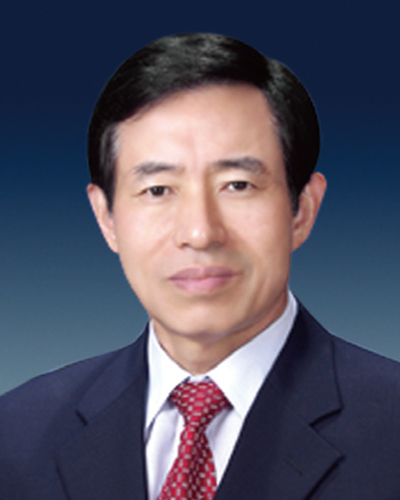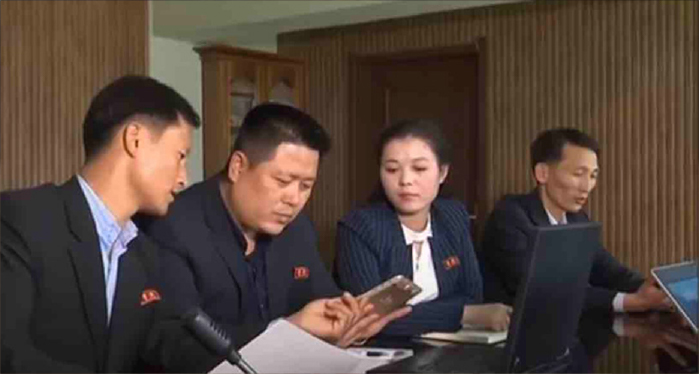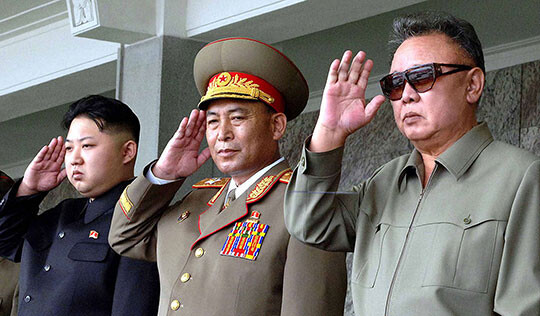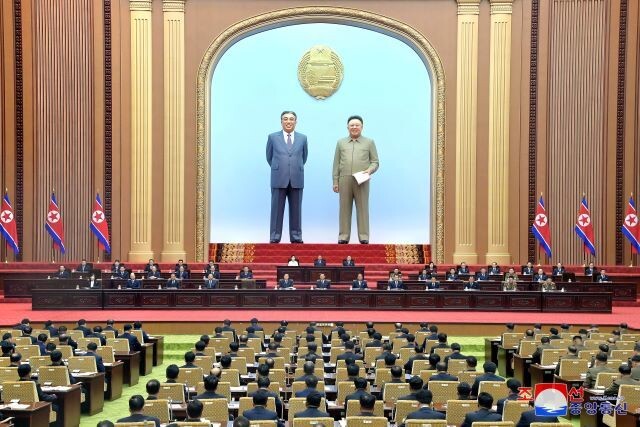This study examines possible war scenarios and elaborates on the conditions leading towards two simultaneous wars in Northeast Asia and its implications to South Korea (ROK)’s security.
An Imagined Scenario: "In 2027, on the one centennial anniversary of foundation of the Chinese People's Liberation Army (PLA), China launched an invasion of Taiwan to seize maritime hegemony under the pretext of reunification. Taking advantage of this time, Kim Jong-un who defined South-North relations as a hostile state at war rather than a fratricidal relationship, kicked off large-scale attack along the Demilitarized Zone to occupy South Korea. This led to the outbreak of simultaneous wars in Taiwan and on the Korean Peninsula. Under these circumstances, the U.S. massively committed its combat power, along with deployment of partial US Forces in Korea to the Taiwan War. Japan supports the Taiwan War, South Korea has to fight against North Korea by itself. North Korea’s tactical nuclear strike is killing thousands of South Korean civilians."
The study addresses offensive realism as a theoretical framework, elaborating on a possible confrontation between the established and rising hegemony powers. The study conducts an assessment of the regional security environment, reflecting South Korea-U.S.-Japan military cooperation and North Korea-China-Russia collaboration.
The study contends that there are three possible war scenarios: the Taiwan War, the Korean War, and Simultaneous Taiwan and the Korean Peninsula Wars. The study identifies the worst likely scenario, examines it thoroughly, and explores strategic implications and options. Any of these scenarios would cause an unprecedented scale of destruction and irrevocable disaster. Deterring those wars and strategic communication are an imperative for the region, along with the necessity of preparing for a potential war. Korea must solve the problem of national existence with diplomacy craft and strong military power. Diplomacy and defense are inextricably linked like two sides of the same coin, and they form the two pillars supporting national security.
The study proposes the ROK-U.S.-Japan Military Cooperation Task Force, establishment of ROK-led warfighting systems, and Northeast Asian foreign affairs-defense ministerial strategic talks.
I. Predictions of Offensive Realism:Inevitable War Between U.S.-China Hegemony
Chinese diplomats and politicians have described China’s rise as peaceful. Academics have explained this through Kenneth Waltz’s paradigm of defensive realism (Waltz 1979). The acceptance of this paradigm started to change during the Obama administration when he announced the “Pivot to Asia,” and it increased further during the Trump administration when China was highlighted as a strategic competitor (Liberthal 2011; Sevastopulo 2017). This paradigm shift was once more revisited with the worries that China might invade Taiwan (Kuo 2019).
This made many academics to turn their attention to John Mearsheimer’s theory of offensive realism. Mearsheimer’s theory shares essential assumptions with Waltz’s defensive realism: states persist in a condition of anarchy, with no agency capable of protecting them from each other. Therefore, they are bound to augment their power to ensure future survival. Mearsheimer departs from Waltz in viewing how much power is necessary to achieve it. He deems that states’ final goal is to achieve hegemony in the international system. The second assumption of Mearsheimer’s offensive realism is that great powers possess some offensive military capabilities, giving them the possibility to cause significant damages to rivalry states. The third assumption says that states cannot trust each other’s intentions. Mearsheimer’s theory implies that China is bound to become a hegemon, signifying that it cannot rise peacefully. This further implies that Beijing might become inclined to solve its regional security challenges, which primarily include the issue of reunification with Taiwan. For these reasons, Mearsheimer stipulates that confrontations between Beijing and Washington are inevitable, including military confrontations as well (Mearsheimer 2001: 21, 30-31, 373-377).
II. Unprecedented Instability in the Regional Security Environment
If we re-examine the regional security order from the perspective of offensive realism, we can see that the rivalry between the U.S. and China intensifies. They compete across all global domains including ideology, military, economy, trade, technology, and cyber security. A new Cold War structure between China-Russia-North Korea versus South Korea-U.S.-Japan is emerging. The Russian invasion of Ukraine, Israel-Hamas Conflict, Taiwan Strait tensions, and North Korea’s increasing nuclear capabilities and incessant missiles tests led South Korea, U.S., and Japan to strengthen their military cooperation, along with U.S.-Japan-Philippines collaboration.
President Xi Jinping said, “China will never renounce the right to use force over Taiwan for a unified China” at the opening of a major party meeting on October 16, 2022 (Lun Tian and Blanchard 10/16/2022). President Joe Biden said at the meeting with President Xi Jinping in Bali, Indonesia, on November 14, 2022, “The United States opposes any unilateral changes to the status quo by either side.” He clearly raised U.S. objections to the PRC’s coercive and increasingly aggressive actions toward Taiwan (The White House 2022).
North Korea adopted its Nuclear Forces Policy Law in September 2022. They also conducted the Korea People’s Army (KPA) command maneuver exercise by employing tactical nuclear warheads unit simulating the occupation of South Korea in September through October 2022. Kim Jong-un declared that inter-Korean relations had become a relationship between two hostile countries and two belligerents at war in December 2023 (KCNA 12/31/2023). Kim encourages his people to prepare for a civil war.
III. Actualization of ROK-U.S.-Japan Trilateral Relations: The Spirit of Camp David
The leaders of Japan, the Republic of Korea, and the United States convened at Camp David to inaugurate a new era of trilateral partnership in August 2023 (The White House 2023). They agreed to hold consultations to coordinate their responses to challenges, provocations, and threats in the region. The trilateral governments pledged to expand cooperation among the three countries and elevate their common goals to new horizons across all domains, the Indo-Pacific region, and beyond. The three parties agreed to collaborate closely on broad range of issues, from security, economy, technology to countering disinformation and cyber security. This includes regular diplomatic meetings, annual joint military exercises, intelligence sharing mechanisms, trilateral cooperation in missile defense systems, contingency planning, cooperation in emerging technologies, ensuring economic security, and providing developmental assistance.
They support a unified Korean Peninsula that is free and at peace. The summit concluded with a resolution to build a peaceful and prosperous future not only for the people of Korea, the United States, and Japan, but also for all people in the Indo-Pacific region. Korea, the United States, and Japan are firmly committed to meeting any challenges together now and in the future.
IV. Reinforcement of North Korea-Russia-China Collaboration
In the period before the Camp David summit, Beijing and Moscow expressed their discontent about the U.S. strengthening its alliances in Northeast Asia and potentially creating new ones. This was particularly evident when both sides expressed that their priority had shifted from North Korean denuclearization to preventing the U.S. from altering regional security infrastructure. This, combined with the sanctions against Russia for its illegal invasion of Ukraine, led Moscow closer to Pyongyang, which has been under severe sanctions due to its nuclear and missile development. North Korea supplies arms to Russian military in Ukraine, while Russia shares its space satellite and missile technology. This military technology transfer reinforces offensive warfighting capabilities and intensifies the worries of Japan, South Korea and the U.S. on how those technologies will be developed and utilized (Rozman 2023).
Furthermore, Moscow proposed trilateral military exercises including North Korea, China and Russia as a move to counterbalance U.S.-led trilateral cooperation. On March 28, 2024, Russia vetoed and China abstained from a UN resolution renewing the mandate of the UN Panel of Experts, which monitors UN member states’ enforcement of UN sanctions against North Korea (Cha and Kim 2024). President Putin visited Pyongyang on June 19, 2024, and the two leaders agreed on mutual assistance in the event of contingency (Chosun Ilbo 6/20/2024). North Korea-Soviet Union military alliance treaty, which was signed in 1961 at the height of the Cold War and scrapped in 1996 during the post-Cold War has been revived. Against this backdrop, the close ties between North Korea and Russia are further complicating the security environment in Northeast Asia.
In the meantime, Beijing supports Moscow’s military campaign in Ukraine by supplying tools and technology used for the production of weaponry (AFP in Washington 4/12/2024). The significance of strategic cooperative relations between Beijing and Moscow is also visible in their trade ties. Trade between the two counties reached $240 billion in 2023, marking an increase of more than 64% since 2021, before the Russian invasion of Ukraine. Additionally, in 2023, Russia surpassed Saudi Arabia as China’s top crude oil supplier (Ng and Ma 5/15/2024).
China, North Korea, and Russia expressed discontent about the U.S. formalizing its alliances across the Indo-Pacific including Quad (U.S. Japan, India, and Australia), AUKUS (Australia, UK, and U.S.), and NATO+4 (South Korea, Japan, Australia, and New Zealand), as well as latticework security cooperation such as ROK-U.S.-Japan and U.S.-Japan-Philippines. Beijing interpreted these military cooperation as Washington’s strategy to contain China’s power and influence on the Indo-Pacific (Sayo 2024).
Trilateral cooperation institutionalized by the Spirit of Camp David is a logical strategic move led by the U.S. to ensure the safety of its allies, Japan and South Korea, as well as the broader Indo-Pacific region. Russian-North Korean military collaboration, North Korea’s provocations including drone and trash-carrying balloon infiltrations, and China’s increasingly aggressive actions toward Taiwan have increased the concerns of the ROK-U.S.-Japan trilateral parties.
In the context of the Taiwan Strait crisis and North Korea’s military adventurism, the three parties cannot predict with certainty what kind of provocations might occur, whether China and/or North Korea would wage a war against Taiwan or South Korea, or when such invasion might happen. The ROK-U.S.-Japan trilateral military cooperation is essential for monitoring North Korea-China-Russia’s military activities and for taking counteractions.
Finally, the project and its recommendations need some caveats. Modeling an invasion does not imply that it is inevitable or even probable. The risk of invasion is real enough and potentially so destructive that analysis is worthwhile.
V. War Scenarios in Northeast Asia
Based on the comprehensive regional security assessment and North Korea-China-Russia’s military activities, this section draws on previous literature elaborating on possible war scenarios and related war game analyses. The study estimates the most unfavorable war scenario for South Korea and considers the conditions for war games.
Scenario 1: Taiwan War
Unlike the invasion of Ukraine that started relatively suddenly and caught the world by surprise, military experts elaborate that China’s attack on Taiwan would happen gradually in several key phases. This potentially includes a cognitive perception campaign against Taiwan, cyber warfare, partial blockade of trade routes, and more (Carugati 2022; Cancian et al. 2023). China’s decision to attack would have to be initiated by some kind of trigger, often referred to as crossing the red lines. According to the 2005 Anti-Secession Law, a Taiwanese proclamation of independence, strong rhetoric supporting it, or diplomatic or security moves from Washington showing a formal recognition of Taiwan could be seen by Beijing as crossing the red lines. However, even in the absence of such events, Beijing might choose to invade if the prospects of peaceful unification seem completely unlikely.
China’s attack on Taiwan could take several forms (Colby 2021: 110-146). First, the campaign could start by invading Taiwan’s small islands nearby China’s coast, Jinmendao and Mazudao. This would be accompanied by military action under the banner of the One-China Policy. Beijing might opt to attack Taiwan directly from the start, causing damage to key military and government infrastructure, along with a naval blockade. The second option includes combining aerial bombing and missile attack against U.S. aircraft carriers and American and Japanese bases in Japan and Guam to interdict external intervention. The third scenario further includes the amphibious invasion of Taiwan.
Scenario 2: The Korean Peninsula War
North Korea is estimated to be capable of a conventional attack by nuclear threats or a preemptive nuclear strike. This scenario assumed by North Korea may include the following phases. Phase 1 includes political and psychological warfare against South Korea’s discontented and marginalized populations, along with cyber-attacks against South Korean infrastructure such as command and control, communication, finance, and transportation networks. Furthermore, in this stage, they might strike South Korea’s war guidance headquarters, military operation command systems, and U.S. bases in Korea with long-range artillery and massive missile attacks. Phase 2 includes interdicting U.S. augmentation capability by launching long ballistic missile attack against U.S. bases in Japan, Guam, Hawaii, and possibly even Continental U.S. (CONUS) by intercontinental ballistic missiles (ICBMs). Phase 3 includes breaking through the demilitarized zone (DMZ) with mechanized forces to encircle Seoul with maneuver warfare, and demanding surrender by threatening the use of tactical nuclear force. Finally, advance southward to conduct a link-up operation between amphibious forces from East and West Coasts along the Yeongdong Highway to intercept personnel and logistic support from the south. Finally, they could continue southward and encircle Busan with a double envelopment strategy using the Seoul-Busan Expressway as the main effort and the East and South Sea Expressways as secondary efforts. This plan aims to take control of the entire Korean Peninsula within 5-7 days before the deployment of U.S. augmentation (Chung 2022a: 167-168).
If North Korea carries out a nuclear threat attack, it is estimated that it will move according to four scenarios: (1) the use of nuclear weapons for the purposes of intimidation, coercion, and deterrence; (2) limited use of nuclear weapons; (3) large-scale use of nuclear weapons; and (4) breakdown of the United States’ extended deterrence pledge (Bennet, Choi, Go, Bechtol, Park, Klingner, and Cha 2021: 43-52).
First, the use of nuclear weapons for the purpose of blackmail, coercion, and deterrence: This involves provocations such as infiltrating the Northern Limit Line (NLL) or occupying five islands in the West Sea and threatening to use nuclear weapons if ROK and the United States respond.
Second, limited nuclear employment: North Korea may attempt to break the ROK-U.S. will to respond by making Seoul a nuclear hostage and launching nuclear attacks on several cities. Additionally, if the war situation does not go as intended, they may use tactical nuclear weapons against ROK-U.S. counter-offensive forces. If South Korea does not stop its counteroffensive, North Korea is expected to threaten to strike U.S. bases in the Indo-Pacific region and even attack the U.S. mainland.
Third, major warfare with nuclear arsenal: North Korea may use 40 to 60 nuclear warheads in the early stages of the war to strike key political high-payoff targets and naval and air force command and control facilities in South Korea to force its surrender.
Fourth, attempting to divide the relationship between Korea and the U.S.: Undermining the U.S. pledge for extended deterrence by threatening to attack U.S. mainland with a nuclear arsenal (Chung 2022b: 73).
Scenario 3: Simultaneous Taiwan and the Korean Peninsula Wars
China and North Korea might collaborate to wage two wars in Northeast Asia. The PLA may attack Taiwan, along with missile strikes against U.S. bases in Japan to prevent their deployment to Taiwan War as well as the Korean theater. China could deploy two aircraft carriers into the Yellow Sea or West Sea to seize maritime supremacy in anti-access and area denial (A2/AD) strategy. North Korea may launch a large-scale attack by breaching the DMZ, together with missile strikes against U.S. bases in Korea and Japan, to prevent U.S. redeployment to the Taiwan Conflict, thereby helping the PLA win the war.
If China’s PLA invades Taiwan under the pretext of reunification while seizing maritime hegemony, we should assume that North Korea might take advantage of this situation and launch an all-out war against the South. The U.S. would be forced to fight two wars, or even to choose one. In the worst scenario for South Korea, we should consider that the U.S. might choose Taiwan as strategically more important. This action would leave South Korea to defend itself by its own means.
This scenario is less highlighted in the academia as well as the military because we are trapped in a mindset where we cannot think strategically. Considering the increasing tensions in the Cross-Strait and on the Korean Peninsula, the simultaneous two warfare scenario should be considered. Since it is possible to wage interlocking wars rather than two separate wars, it is necessary to comprehensively analyze and assess the military activities of China and North Korea to develop strategic implications and alternatives.
VI. Simultaneous Wars as the Worst Scenario for South Korea
The simultaneous Taiwan and the Korean Peninsula War, rather than just the Taiwan War or the Korean Peninsula War, should be considered possible. China and North Korea may collaborate in deliberate coordinated attacks to increase their chances of winning. The reasons are as follows:
First, such simultaneous wars waged by China and North Korea might force the United States to engage in two wars in the region at the same time. The U.S. may not be able to win any of the two wars due to the split of its combat assets.
Second, the U.S. might deem Taiwan its strategic priority due to its national interest. The U.S. might intensively deploy its combat forces from bases in Japan, Guam, and CONUS to a Taiwan War. If the Taiwan situation deteriorates rapidly, the U.S. Forces Korea (USFK) might deploy the F-16 Fighter Wing, Stryker Brigade for counter-amphibious forces, AH-64 Apache Helicopter Battalion, and OA-10C Fighter Wing to Taiwan.
Assuming that North Korea wages a sequential war in deliberate coordination with China and the Chinese PLA launches an amphibious operation against Taiwan to gain maritime supremacy along the first island chain, the U.S. might request the ROK to deploy its Marine Corps, which has conducted amphibious exercises with the U.S. marine corps, and warships from Jeju Naval Base. This would be a dangerous situation for the ROK, because North Korea could exploit weakened ROK-U.S. combined warfighting capability to launch a large-scale attack to the south, resulting in a catastrophic war.
Third, it is highly likely that Russia would provide military support to North Korea in accordance with the Treaty on Comprehensive Strategic Partnership recently signed by the two parties. The Vladivostok Pacific Fleet could be deployed to the East and South Seas, including the intervention of the Eastern Military District’s ground Force in Khabarovsk. Furthermore, the Northern Theater Command and the Eastern Theater Command of the Chinese PLA might intervene in the Korean Peninsula War, along with two Chinese aircraft carriers aiming to seize maritime supremacy in West Sea. In this situation, North Korea could successfully conduct short, decisive high-maneuver warfare. Historically, countries that have occupied maritime superiority in West Sea have always won their wars, including the 1592-1598 Japanese Invasion, 1894-1895 Sino-Japanese War, the 1904-1905 Russo-Japanese War, and even the 1950-1953 Korean War.
Fourth, if North Korea launches an attack on U.S. forces in Japan and Guam with various long-range missiles and potentially targets the U.S. mainland with ICBMs, China would be able to attack Taiwan in the absence of intervention by external forces. Also, the redeployment of U.S. military forces and ROK military to Taiwan could trigger North Korea to invade the South.
In this worst-case scenario, South Korea would have to defend itself without military support from the U.S. and Japan. This could result in a situation where South Korea fights North Korean-Chinese-Russian trilateral forces.
Of course, the South Korean military is not weak like the ROK forces during the Korean War. The South Korean military holds the 5th place in the world military ranking, with overwhelming conventional warfighting capability over the North and the determination of fifty-two million people to defend a free and prosperous Republic of Korea. South Korea would fight North Korea, which holds the 37th military ranking and has a population of twenty-five million people (Global Firepower 2024).
VII. Strategic Communication and Total War Readiness Posture Imperative for Crisis Management
Recent tensions in the Taiwan Strait as well as on the Korean Peninsula are more serious than ever before. If these challenges are not well managed, the two wars might erupt simultaneously in the region. In case the deterrence strategy fails, South Korea, the United States, and Japan will have to prepare to win the war.
This study proposes establishment of ROK-U.S.-Japan Military Cooperation Task Forces (ROK-U.S.-Japan MCTF), consisting of strategic planners from ROK Joint Chiefs of Staff (JCS), U.S. Indo-Pacific Command, Japan Joint Staff, and trilateral security experts. ROK-U.S.-Japan MCTF should conduct consultations to coordinate their responses to challenges, provocations, and threats in the region, periodic intelligence estimates, and simulation games. It will be possible to develop the missions and responsibilities of the three member states in accordance with the three scenarios.
ROK-led war readiness systems should be established. It is essential for South Korea to build comprehensive war guidance systems by Military Commander-in-Chief, a ROK-led Combined Forces Command, and conduct realistic field maneuver exercises with strategy, operational art, and tactics, reserve forces combat mobilization training, and civil defense exercise. This total war readiness posture can prevent war. In the event of actual war, the ROK may win the war with minimum casualties and achieve a free, unified Korea.
In particular, North Korea might attack with a tactical nuclear warhead delivered by an ultra-supersonic missile toward the Metropolitan within one minute. South Korea will not be able to cope with North Korea’s tactical nuclear preemptive strike. South Korea will have to respond to North Korea’s nuclear challenge to national survival with its own nuclear arsenal. Therefore, it is urgent for South Korea to pursue nuclear armament.
ROK-led warfighting systems should be established with the transition of wartime operational control. It will be very challenging for the U.S.-led Warfighting Combined Forces Command to wage war under the conditions of two simultaneous wars in the region. Relationships and roles of ROK JCS, Future Combined Forces Command (F-CFC), United Nations Command (UNC), and USFK should be defined. A Military Committee consisting of chairmen from ROK and U.S. JCS should provide strategic guidance and operational directives for the F-CFC.
The ROK JCS should be in charge of counter-provocation operations. UNC should take the responsibility for managing the armistice agreement and acting as a force provider in the event of a contingency. The F-CFC should develop operational plans and conduct combined exercises, including exercises of operational control over ROK-USFK, along with U.S. augmentation forces and tactical control over UN combat forces in the event of war (Jeon 6/22/2024).
The transition of wartime operational control needs to be implemented early by reorganizing the command structure by ROK four-star general serving as Commander of the CFC and a U.S. four-star general as Deputy Commander (Chung 2024c: 122-158).
There is a need for the ROK and the United States to agree on the terms of strategic flexibility so that when part of the U.S. forces stationed in Korea flow out to areas outside the Korean Peninsula, alternative forces can be deployed in advance or at the same time. Additionally, in the event of an emergency on the Korean Peninsula, U.S. military forces stationed throughout the world will need to flow in to the Korean Peninsula theater to strengthen the ROK-U.S. combined defense posture (Jeon 2024).
Finally, along with strategic communication between South and North Korea, annual South Korea-China-Japan summit talks, Northeast Asian Foreign-Defense Ministerial Strategic Talks need to be held to consult on security issues. A Northeast Asia security regime should be institutionalized to manage peace and stability in the region. This security cooperation regime could make contributions to preventing war. We could establish Northeast Asia Humanitarian Assistance and Disaster Relief Operation Task Forces to cope with transnational threats such as natural disasters.
Amid the huge loss of life in the Russo-Ukraine War and the Israel-Hamas Conflict, a powerful message appears: “Be willing to join peace talks and be prepared to wage war, if you really want peace.”
References
AFP in Washington. 2024. “China Supporting Russia in Massive Military Expansion, US says.” The Guardian. April 12. https://www.theguardian.com/world/2024/apr/12/china-supporting-russia-in-massive-military-expansion-us-says
Atlantic Council Experts. 2024. “Experts React: What will Putin and Xi’s ‘New Era’ of Cooperation mean for the World?” Atlantic Council. May 16. https://www.atlanticcouncil.org/blogs/new-atlanticist/experts-react-what-will-putin-and-xis-new-era-of-cooperation-mean-for-the-world/
Bennet, Bruce W., Kang Choi, Myung-hyun Go, Bruce E Bechtol Jr., Ji-young Park, Bruce Klingner, and Du-hyun Cha. 2021. Countering the Risks of North Korean Nuclear Weapons. RAND Corporation. April. https://www.rand.org/content/dam/rand/pubs/perspectives/PEA1000/PEA1015-1/RAND_PEA1015-1.pdf
Cancian, Mark F., Matthew Cancian, and Eric Heginbotham. 2023. The First Battle of the Next War: Wargaming a Chinese Invasion of Taiwan. Center for Strategic International Studies (CSIS). January 9. https://www.csis.org/analysis/first-battle-next-war-wargaming-chinese-invasion-taiwan
Carugati, Remy. 2022. “Ukraine and Taiwan: Not the Same Fight.” Network for Strategic Analysis. March 14. https://ras-nsa.ca/ukraine-and-taiwan-not-the-same-fight/
Cha, Victor and Ellen Kim. 2024. “Russia’s Veto: Dismembering the UN Sanctions Regime on North Korea.” Center for Strategic & International Studies. March 29. https://www.csis.org/analysis/russias-veto-dismembering-un-sanctions-regime-north-korea
Chung, Kyung-young. 2022a. The Transition of Wartime Operational Control [in Korean]. Seoul: Maebong Publisher.
________. 2022b. “North Korea’s Nuclear Challenge and South Korea’s Response Strategy [in Korean].” The Journal of Military Affairs. Vol. 112: 63-94.
________. 2024c. “Security Policy Prospects and the ROK’s Preparation Direction in the event of Reelected President Trump [in Korean].” The Journal of Military Affairs. Vol. 117: 122-158.
Colby, Elbridge A. 2021. The Strategy of Denial: American Defense in an Age of Great Power Conflict. New Haven & London: Yale University Press.
Global Firepower. 2024. “Military Ranking in the World.” https://www.globalfirepower.com/
Jeon, Jei-guk. 2024. “Strategic Flexibility of the USFK.” Author’s Interview with Jeon Jei-guk, Former Deputy Minister for Defense Policy. June 22.
Korean Central News Agency (KCNA). 2023. “Report on 9th Enlarged Plenum of 8th WPK Central Committee.” December 31.
Chosun Ilbo. 2024. “North Korea and Russia ‘provide military aid without delay in the event of a state of war’... Release of the Treaty [Full Text][in Korean],” June 20. https://www.chosun.com/international/international_general/2024/06/20/QXEYNKQV7RFFVHP6QUHNF6SV6M/
Kuo, Lily. 2019. “All Necessary Means: Xi Jinping Reserves Right to Use Force against Taiwan.” The Guardian. January 2. https://www.theguardian.com/world/2019/jan/02/all-necessary-means-xi-jinping-reserves-right-to-use-force-against-taiwan
Liberthal, Kenneth G. 2011. “The American Pivot to Asia.” Brookings. December 21. https://www.brookings.edu/articles/the-american-pivot-to-asia/
Lun Tian, Yew and Ben Blanchard. 2022. “China will Never Renounce Right to Use Force over Taiwan, Xi says.” Reuters. October 16. https://www.reuters.com/world/china/xi-china-will-never-renounce-right-use-force-over-taiwan-2022-10-16/
Mearsheimer, John J. 2001. The Tragedy of Great Power Politics. New York: W.W. Norton and Company.
Ng, Kelly and Yi Ma. 2024. “How is China Supporting Russia after it was Sanctioned for Ukraine War?” BBC News. May 15. https://www.bbc.com/news/60571253
Rozman, Gilbert. 2023. “A Perspective from China and Russia.” The Asan Forum. September 4. https://theasanforum.org/a-perspective-from-china-and-russia/
Sayo, Saruta. 2024. “What the Russia-DPRK Relationship Reflects About the West’s Security Strategy.” Asia-Pacific Leadership Network (APLN). January 18. https://www.apln.network/analysis/commentaries/what-the-russia-dprk-relationship-reflects-about-the-wests-security-strategy
Sevastopulo, Demetri. 2017. “Trump Labels China a Strategic ‘Competitor.’” Financial Times. December 19. https://www.ft.com/content/215cf8fa-e3cb-11e7-8b99-0191e45377ec
The White House. 2022. “Readout of President Joe Biden’s Meeting with President Xi Jinping of the People’s Republic of China.” November 14.
_________. 2023. “The Spirit of Camp David: Joint Statement of Japan, the Republic of Korea, and the United States.” August 18.
Waltz, Kenneth N. 1979. Theory of International Politics. Reading, Mass: Addison-Wesley Pub.
■ Kyung-young CHUNG is an adjunct professor at the Graduate School of International Studies at Hanyang University.
■ Zeljana ZMIRE is a lecturer at the Graduate School of International Studies at Hanyang University.
■ Edited by: Jisoo Park, Research Associate
For inquiries: 02 2277 1683 (ext. 208) | jspark@eai.or.kr





